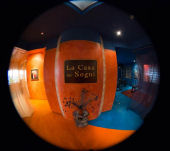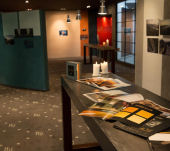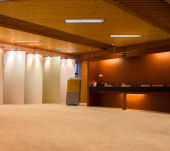Giorgio Graesan
Life in the Graesan family has never been in black and white.
The father, Luigi Graesan was passionate about decoration, and immediately after the war, he founded ALPI COLORI to manufacture water-based paints and pigment powders. His two sons, Giovanni and Giorgio, were hard put to keep up with their energetic father in the colourful manner in which he ran the business, but they picked up his knowledge, creative curiosity, and desire for growth and innovation.
In 1970, Giovanni launched ALPI PARATI, which produced wallpaper, while Giorgio set about creating and marketing innovative wall coatings, using innovative marketing techniques with strong colours, eventually becoming the commercial director.
In 1983, the need to push ahead with tones led to Giorgio creating Castoro, working with alternatives to wallpaper for wall coatings, leaving the former to Giovanni.
The first big change came in 1987. AQUARIA was launched on the market, a Wall Coating in a Tin. This was the first real marketing revolution - the walls of the home decorated using a paint.
In 1990, the SPATULA STUHHI phenomenon came on the market. This natural, craftsman-like, artistic decoration material was available in an exciting array of colours that were never left to chance, but were always based on the axiom Colour=Excitement.
Since then it has been seen in all sorts of colours - 1996 saw Mediterranean tones and hues with the "Colori di Portofino", 1999 the warm "Sole di Marocco" (Moroccan Sun), and in 2004, the verve and energy of life in New York.
Early in 2004, Giovanni left this world and its wallpaper, leaving innovation and optimism in the heart of anyone that came across him, in his wake.
In 2006, an important company refactoring transforms Giorgio Graesan in a company projected to the future and in European reality. A change in the name adding & FRIENDS, to evidence the importance of partners relationship, the nomination of an administrator for the company, making it a leaner and meaner society of persons, freeing energies for more development and transformation.





